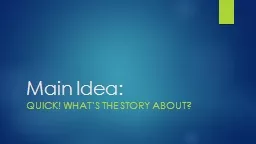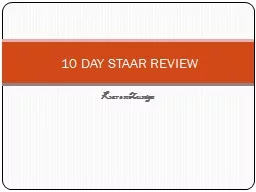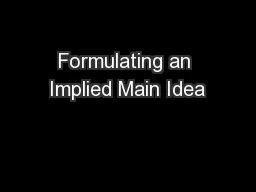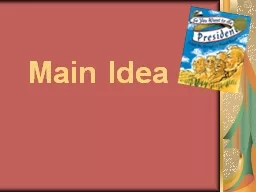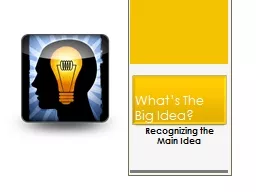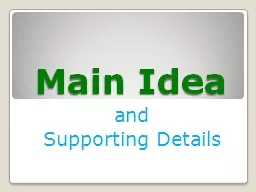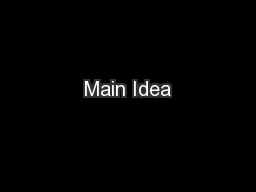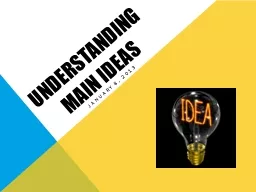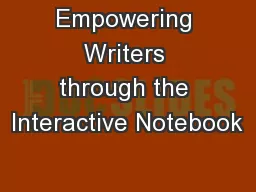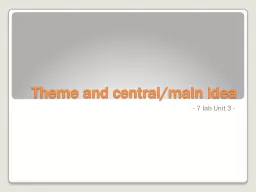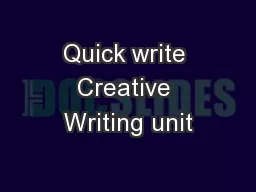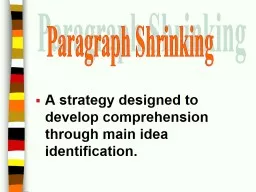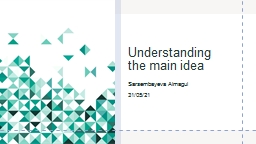PPT-Main Idea: Quick! What’s the Story About?
Author : alexa-scheidler | Published Date : 2018-01-30
Imagine This Ms Wilhite has a brace on her wrist and students ask What happened Ms Wilhite starts telling you this whole story Well I woke up Monday and it was
Presentation Embed Code
Download Presentation
Download Presentation The PPT/PDF document "Main Idea: Quick! What’s the Story Abo..." is the property of its rightful owner. Permission is granted to download and print the materials on this website for personal, non-commercial use only, and to display it on your personal computer provided you do not modify the materials and that you retain all copyright notices contained in the materials. By downloading content from our website, you accept the terms of this agreement.
Main Idea: Quick! What’s the Story About?: Transcript
Download Rules Of Document
"Main Idea: Quick! What’s the Story About?"The content belongs to its owner. You may download and print it for personal use, without modification, and keep all copyright notices. By downloading, you agree to these terms.
Related Documents

